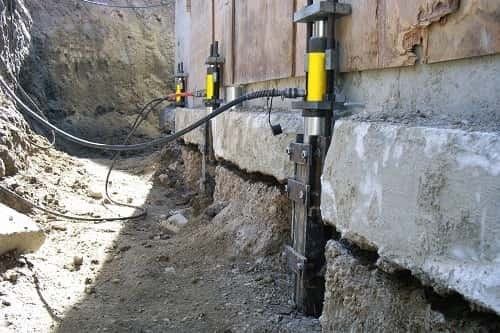Foundation leveling refers to the restoration of the footing in concrete footer walls and basement floor systems. For homes that do not have a basement, a sub-area known as the “first floor” must be leveled. This is done by excavating around the home and installing footers on the lowest level of the lot. If this is not done, water may enter through the cracks in the foundation and damage the home.
When you decide to use foundation leveling services, the contractor will first make an assessment of your foundation problems, then provide you with the most cost-effective solution to your problem. They will begin by removing any debris from around the house, such as old tree limbs and uprooted shrubbery. The contractor will also inspect the house for other potential problems, such as cracks in the foundation or poor drainage.
Once they are finished inspecting the house, they will determine if there are any structural issues that will require further repair. If so, they will suggest a course of action for restoring the foundation. If the problem is not severe, they will recommend simple methods such as steel pads placed beneath the foundation. These will need to be replaced periodically but will keep water away from the foundation. If the damage is more severe, such as a crack in the foundation, it will require extensive repairs.
To level, a foundation can be a time-consuming project for homeowners. It can also be costly, especially when doing it yourself. Fortunately, there are contractors out there who are skilled at handling these types of jobs. These contractors have been trained in the proper techniques for leveling a house’s foundation.
Many times, foundation leveling can be accomplished without digging. For instance, if the soil is slightly decomposed, it can be shoveled off the surface. A garden tiller can also be used to accomplish this task. However, there are limits to what can be achieved with just a shovel or a garden tool. Most importantly, soil particles get caught up in the crevices of a shovel and can severely compromise a foundation repair job.
Once soil particles are removed, the soil can be inspected for compacting. If compacting is present, it can be easily added back into the soil through proper tools. The cost of the project will depend on the amount of compacting that needs to be done. It might even require adding soil to the home’s exterior to remedy the problem. This process should only be used as a last resort because the exterior coating on the home’s exterior will be significantly heavier than the interior.
Once a house has been inspected for foundation problems and the extent of the damage is known, foundation levelers can be utilized. These are special equipment that allows contractors to add additional soil to a foundation while it is still resting on top of the existing foundation. Once the new foundation is on top, it can be fortified by the addition of steel rebar and piles. This strengthening process not only keeps a foundation leveler anchored to the house, but it also makes the foundation stronger overall.
Contractors can also utilize foundation levelers for foundation repair on the outside of a home. In many cases, the foundation has sunk or shifted on its own over time. When this occurs, the rain has started to make its way into the basement. Even though the exterior of the home has been protected by foundation levelers, the interior is still at risk from water damage. When the humidity rises inside, more condensation forms on mirrors, doors, and window sills. In addition, foundations tend to swell when the weather gets really cold, which can cause cracks to form throughout the home.

